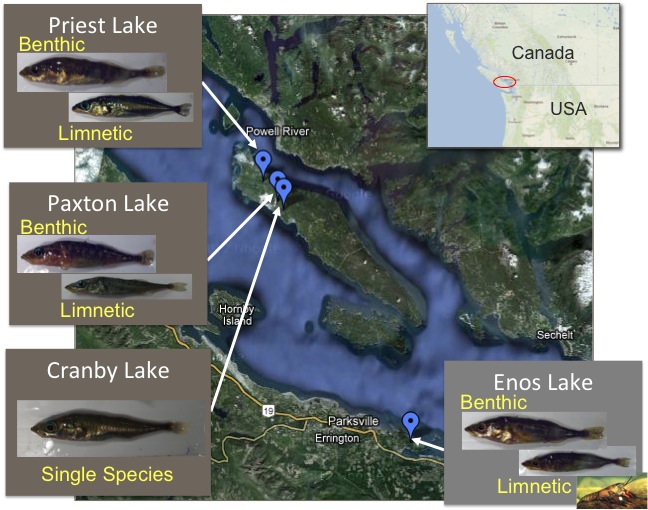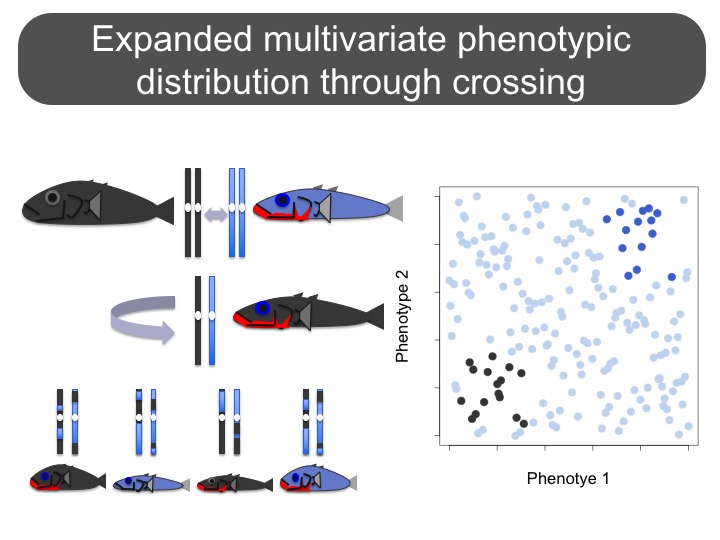Male Competition and Speciation
I worked with Liliana Lettieri and Jenny Boughman at Michigan State University on a project investigating the genomic basis of morphological and behavioral traits important for sexual isolation in benthic and limnetic stickleback fish from British Columbia.
This work required a 'mapping population', a set of second generation hybrid fish with a mixture of both species' genomes.
An added, but underutilized, bonus of creating this population of hybrid fish is that we can get a detailed understanding of the phenoptype-fitness landscape. This is because this population includes individuals with unique trait combinations not seen in either pure species. In effect, we fill out the multidimensional phenotypic landscape.
Our work investigating the male competition fitness landscape gives novel insights into how competition between males for resources can impact the speciation process. It was published in Ecology Letters. [pdf]
This is a brief video "abstract" of the paper:
Since then, I published a review on the topic of male competition and speciation with Robin Tinghitella, Alycia Reynolds Lackey, Michael Martin, Peter Dijkstra, JP Drury, Robert Heathcote, Liz Scordato, and Alexandra Tyers [free access link], as well as a response to five commentaries on our review [free access link].

Marine populations of sticklebacks have invaded multiple post-glacial lakes in British Columbia and independently speciated.

We have a large population of hybrid fish created for a QTL mapping population. These fish are very useful for understanding the phenotype-fitness map.